
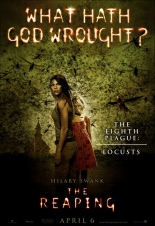 Like a little Omen with your Outbreak? The sixth horror film under the Dark Castle Entertainment shingle, The Reaping takes investigative scientist Katherine (Hilary Swank) to Haven, La., to determine why the dirty little town’s river has turned red with blood. The locals blame a cute lil’ girl (AnnaSophia Robb) who looks as if she’s feral and has menstrual blood caked on her leg, but Katherine’s not so sure.
Like a little Omen with your Outbreak? The sixth horror film under the Dark Castle Entertainment shingle, The Reaping takes investigative scientist Katherine (Hilary Swank) to Haven, La., to determine why the dirty little town’s river has turned red with blood. The locals blame a cute lil’ girl (AnnaSophia Robb) who looks as if she’s feral and has menstrual blood caked on her leg, but Katherine’s not so sure.
She’s a miracle-buster, after all, explaining away dozens of so-called religious occurrences with good ol’ scientific know-how. Her time in Haven may change all that, however, as frogs rain from the sky, flies swarm, lice propagate, cows die, locusts attack, Idris Elba takes off his shirt, yada yada yada – it’s as if the 10 biblical plagues are actually happening!
 Stephen Hopkins’ film isn’t nearly as bad as its icy reception would lead you to believe. Okay, so it’s overly orange-looking and has an end scene that you can predict halfway through, but it’s fun enough and I’m always up for a movie in which fat people’s faces are covered with boils.
Stephen Hopkins’ film isn’t nearly as bad as its icy reception would lead you to believe. Okay, so it’s overly orange-looking and has an end scene that you can predict halfway through, but it’s fun enough and I’m always up for a movie in which fat people’s faces are covered with boils.
The one thing that does suck is the climax, in which Hopkins goes overboard on the special effects, bleeding every last drop from the budget. I liken it to when you go to Chili’s and pay with a gift certificate, and then the waiter tells you he can’t give you change, so you’re like, “Okay, I guess we’ll get the Molten Chocolate Cake, too.”
Moral: Never trust a British actor trying to wrangle a Bayou accent. —Rod Lott


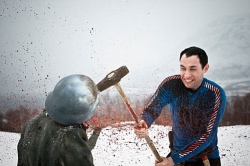 Yeah, and we can have a guy cut off his arm with a chainsaw because he’s been bitten and he thinks he has to cut off any body part a zombie chomps down on, and then another zombie bites him in the crotch. Just imagine the look on his face!
Yeah, and we can have a guy cut off his arm with a chainsaw because he’s been bitten and he thinks he has to cut off any body part a zombie chomps down on, and then another zombie bites him in the crotch. Just imagine the look on his face!
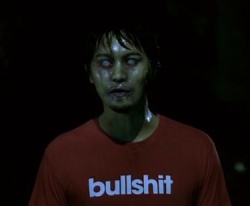 Next, a bullied youth takes revenge on his tormenters via that old black magic, followed by a campfire tale that name-drops a slew of scary movies as it pays homage to the more “spirited” ones. The campers experience real terror, but hey, at least they’re not made to “
Next, a bullied youth takes revenge on his tormenters via that old black magic, followed by a campfire tale that name-drops a slew of scary movies as it pays homage to the more “spirited” ones. The campers experience real terror, but hey, at least they’re not made to “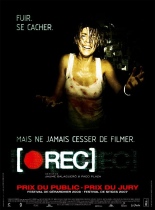
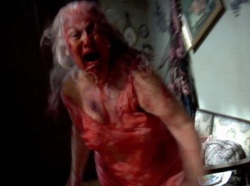 And then the corpses she leaves behind become reanimated and pick up her bad habits. And the cops show up, bringing the Army with them, and they seal off the building and won’t let anyone out.
And then the corpses she leaves behind become reanimated and pick up her bad habits. And the cops show up, bringing the Army with them, and they seal off the building and won’t let anyone out.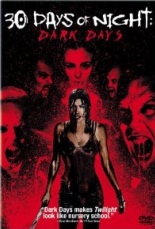
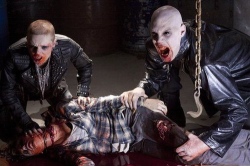 Well, they don’t have fun. Not with all the bleeding and dying and smashing friends’ heads in with cement blocks that goes on. But it was gory, gruesome fun for me. And even though the movie takes other, huge liberties with the original story (simplifying some things; completely changing others, like what the vampires are up to), Niles and Ketai came up with a story that, allowed to stand by itself, holds together in an entertaining way.
Well, they don’t have fun. Not with all the bleeding and dying and smashing friends’ heads in with cement blocks that goes on. But it was gory, gruesome fun for me. And even though the movie takes other, huge liberties with the original story (simplifying some things; completely changing others, like what the vampires are up to), Niles and Ketai came up with a story that, allowed to stand by itself, holds together in an entertaining way.